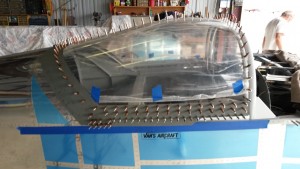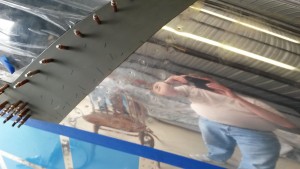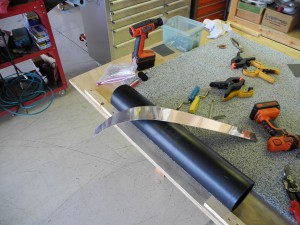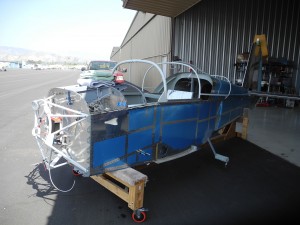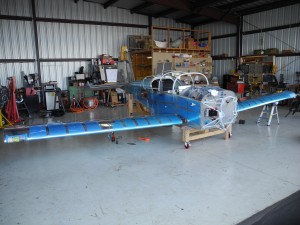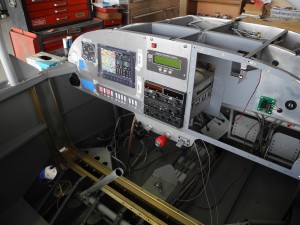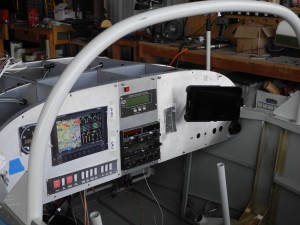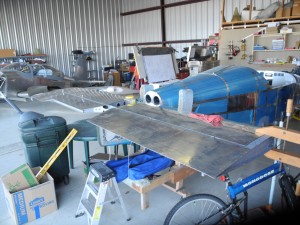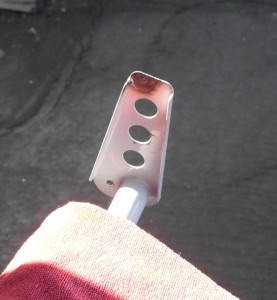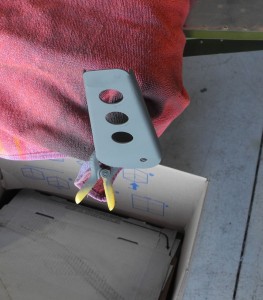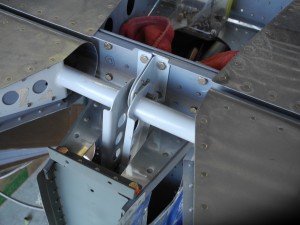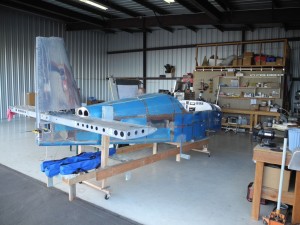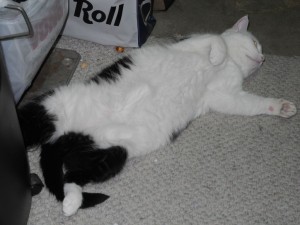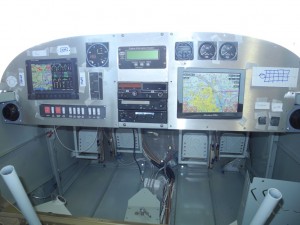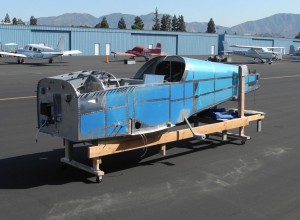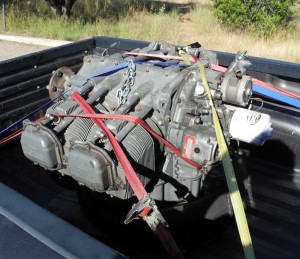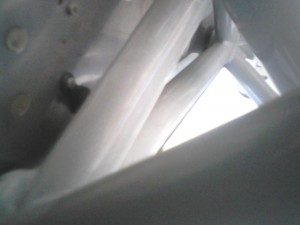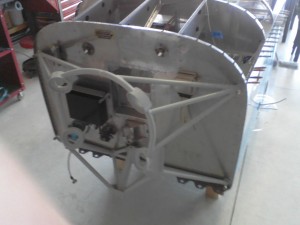Well, we finally got to the canopy skirts and I feel we did a pretty good job! We talked about using fiberglass for perfection, but I deceided to go with the aluminum skirts that came with the kit. I must say I’m pretty happy.
The sides did require a little forming, but nothing like the back skirts! After about 9 hours over two week-ends, we are pretty happy with the resaults.
All in all, they came out pretty nice. The secret? Get a 3 foot piece of 4″ PVC and screw it to the table top. Install the part on the plane, and make location and direction of the required bend. Remove, bend, and replace. Repeat about a zillion times. Be real careful with clecos because they will be going on and off a bunch of times.

